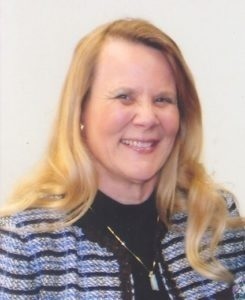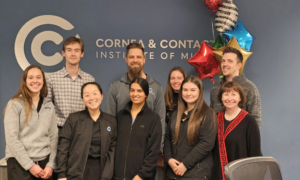By Pamela Miller, OD, FAAO, JD, FNAP

Feb. 26, 2020
If you have been reading the professional literature lately, you may have noticed that we are in the midst of a war against myopia. As doctors, we are in the best position to make a difference with our patients both for today and for their future.
It is always difficult to make the time to cover everything we want to during the patient visit. However, we have a golden opportunity to help educate our patient while providing optimal care that substantially affects their performance and lives for decades to come.
It is the youngest patient whom we need to concentrate on for this discussion. By implementing several suggestions and management options when prescribing for our patients, who are still growing and becoming more myopic with each passing year, we can impact their visual future and their ability to perform in school and beyond.
Register for THE Myopia Meeting
There are things we cannot change that are part of the myopia picture. We know that Asians, females and those with a family history of nearsightedness are all elements of the myopia soup. We also know that the younger the child is, with an onset of age seven, or younger, the greater risk for myopia progression. When both parents are nearsighted we know the risk is higher for the child and their siblings to be nearsighted.
So, let’s look at the things we can change. Here are basic and simple steps that we can all implement in our practices to help stem the myopia tsunami. We don’t have to spend a lot of energy and chair time, but if each of us does a little, then together we can accomplish a lot.
More Time Outside, Less Time In Front of Digital Devices. Advise your patients that increased outdoor time and less time on the computer and hand-held devices can make a difference. Advising a maximum of 20 minutes at a time on the computer combined with spending between 1-3 hours a day outside can be a critical element in myopia control. Taking regular breaks is important and may be supplemented with ocular lubricants to combat the dry eye often associated with prolonged computer usage.
Consider Contacts. Contact lenses are an option, both RGP and soft lenses. Age is not the determining factor when making the decision to fit a young patient. Other factors, like maturity, amount of correction, motivation and personal hygiene are all critical in determining if this option is appropriate. If contact lenses are not an appropriate option at the moment, set the groundwork for the future.
Other Articles to Explore
Offer Ortho-K. If you are comfortable utilizing orthokeratology (Ortho-K), then this option should be part of your recommendation portfolio. If you don’t feel comfortable, then other options are available that will make a difference for your patient, or refer to a colleague who does Ortho-K.
See Patients More Frequently. Schedule at-risk patients to be seen more frequently, especially if it appears that their correction is increasing, even at a moderate rate.
Prescribe Low-Dose Drug Therapy. Utilizing low dose drug therapy (atropine) may be part of your armamentarium.
Prescribe Multifocals or Progressive Glasses. Glasses are always an option, but you may want to consider utilizing multifocals or progressive lenses. Even reading glasses may be beneficial. Any accommodative insufficiency, or even esophoria, should be part of the basic examination evaluation.
Check Patient’s Working Distance. Check to see the working distance your patient is utilizing. Experience tells us that children hold materials closer than most adults, so keeping a working distance greater than 25 cm is advised.
Take Thorough Case History & Do Binocular Examination. Conduct a thorough case history and binocular examination so that your recommendations are based on the facts of the exam and your findings. Your history should include problems with headaches, attention issues, poor academic performance, etc. You need the facts and those findings to lay out the best action plan. Every time you see the patient, you should re-evaluate your options in light of your findings and what is best for your patient.
Understand the Patient’s Fears & Expectations. Patient communication is paramount when working with the myopic patient, and important to undertake before implementing a plan of action. After all, your goal is clear: to manage and control the myopia. Doing that requires everyone to be on the same page, and for you to be able to monitor your patient.
Answer Questions About Insurance Coverage. Bear in mind that insurance coverage may not be available for myopia management. How you handle the financial aspects is key to your myopia management plan. This may be a challenge, so your ability to communicate and follow-up are essential for the greatest positive endpoint.
Now is the time to step up and protect our youngest patients’ future vision by controlling their myopia. While we concentrate on our patients and their families, it is critical that we involve our staff in this process as well. Remember, they are often the people that patients confide in or look to for reinforcement.
It only takes a few moments of our time during our patient exam to discuss myopia management, and it truly can make a world of difference. Let’s work together to implement these basic behavior modification techniques, and fight this battle together.
An excellent source, “Guidelines for Myopia Management,” from the Brien Holden Vision Institute (BHVI), will assist you in evaluating patients and formulating a plan to control myopia. The Myopia Calculator on the BHVI web site is easy to use, and helpful in calculating risk assessment and need for management.
Another great resource: Review of Myopia Management is a leading source of clinical, practice management, market and research information on myopia for eyecare professionals.
 Pamela Miller, OD, FAAO, JD, FNAP, has a solo optometric practice in Highland, Calif. She has a law degree, holds a therapeutic license, is California State Board-certified and glaucoma-certified to prescribe eye medications, and offers comprehensive vision care, contact lenses, visual therapy and low vision services. Dr. Miller is a member of the Essilor Myopia Task Force. To contact her: drpam@omnivision.com.
Pamela Miller, OD, FAAO, JD, FNAP, has a solo optometric practice in Highland, Calif. She has a law degree, holds a therapeutic license, is California State Board-certified and glaucoma-certified to prescribe eye medications, and offers comprehensive vision care, contact lenses, visual therapy and low vision services. Dr. Miller is a member of the Essilor Myopia Task Force. To contact her: drpam@omnivision.com.

























